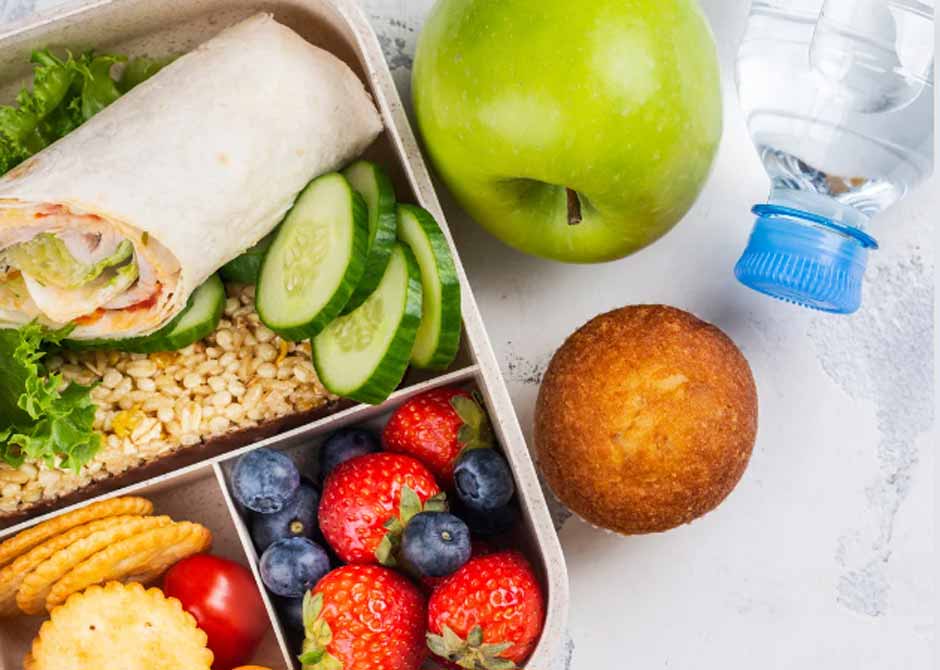 Posted: Sept. 20 2024
Posted: Sept. 20 2024
Its back-to-school time, which means spending hours each day packing lunches. Use these tips and recipes to make packing school lunches easier.
- Pack lunches the day before. Packing lunches the night before helps with time in the morning. When you are trying to get everyone ready for the day it makes for one less stressor in the morning to worry about.
- Make a healthy lunch. Children need the energy from their lunch in order to feed their brain to help them learn throughout the day. Make sure each lunch contains each of the following:
- Protein – Kids need protein to keep them full throughout the day as well to help them grow and build their muscles. This could include meats, beans or eggs.
- Add one fruit and vegetable – vegetables are great ways of getting in fiber to help their stomachs stay healthy. Vegetables also contain many of the vitamins which kids need for their bodies to work properly and fight against diseases.
- Add one grain – When packing grains, look for whole grains. Whole grains contain fiber as well as vitamins and minerals when compared to white grains. Whole grains will provide children with energy to be able to stay active and learn all day.
- Add one dairy – Dairy contains calcium which will help make children’s bones strong. This could be foods made with milk, cheese or yogurt.
- Freeze lunches – Freezing foods for lunches is an easy way to keep foods fresh and cold throughout the school day. Put an ice pack in the lunch box and the food will thaw out and stay at a cold enough temperature to keep the food safe of harmful bacteria.
- Stick to the basics – make sure to pack one thing you know your child enjoys to ensure you know they will eat something at lunch. Switching up foods can add another stress to kids while they go to school so make sure to keep one thing they are familiar with and enjoy eating.
- Food safety – Foods which are perishable need to be kept at a safe temperature to prevent food born illness. Make sure cold food is kept at a temperature below 40 degrees F. You can do this by keeping ice packs in the lunch box or keeping the lunch box in a refrigerator throughout the day. Foods which need to be warm need to be kept above 140 degrees F. You could do this by keeping the food in a thermos or keeping it cold and microwaving the food to 140 degrees F before lunch time.
- Pack the rainbow – Pack fruits and vegetables of different colors. Different fruits and vegetables contain different vitamins and minerals. Getting a variety of colors ensures your child is getting all of the vitamins and minerals they need.
- Make sure you child is hydrated - Do not focus too much on what meal you are packing and forget your child needs to stay hydrated. Packing water is a simple way to keep them hydrated. If you are packing milk, make sure it is able to stay at a cold temperature to ensure food safety. Try to avoid providing your child with fruit juices. These usually are high in added sugar which can cause tooth decay and take the place of nutrients children need.
- Pack fresh foods – Try making sure to pack fresh foods or foods made at home. These foods are lower in sodium and are usually higher in fiber and nutrients compared with frozen or premade foods.
